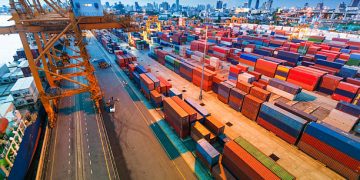In early June, Jiangsu Dongcheng Power Tools Co Ltd, based in Qidong, Jiangsu province, observed a smooth flow of spare parts along its assembly line, where they were efficiently processed, assembled into electric tools, and packaged for shipment to various countries, including Vietnam, Algeria, and Brazil.
Shen Yunyun, head of the company’s sales unit for overseas markets, noted that since its international expansion in 2013, the company has built a robust marketing network spanning over 60 countries and regions across Southeast Asia, South Asia, the Middle East, North Africa, and Latin America. In line with the evolving landscape of cross-border e-commerce, the company is strategically focusing on this sector to expand its customer base.
Supported by 5,000 engineers and workers, Jiangsu Dongcheng plans to continue investing in the research and development of cordless electric tools and battery storage-related electric tools to bolster its export business, according to information from Nanjing Customs.
Market analysts foresee China’s optimization of its export goods structure and the expansion of trading partnerships as measures to mitigate the impact of increasing trade barriers and external challenges. The General Administration of Customs reported a 6.1 percent year-on-year surge in China’s exports to 9.95 trillion yuan ($1.37 trillion) in the first five months.
Lin Jiantian, director of the General Administration of Customs’ Department of Enterprise Management and Audit-based Control, highlighted China’s transition towards greener, advanced high-tech products, signaling its evolving competitive edge.
Guo Lei, chief economist at GF Securities, maintains a positive outlook for China’s export growth in the coming months, supported by the nation’s production capabilities, market potential, and tech-intensive green products.
A survey by the China Council for the Promotion of International Trade indicated that 81.6 percent of foreign trade-oriented businesses anticipate stable or increased exports in the first half of the year.
The World Trade Organization forecasts a rebound in global trade, expecting goods trade to expand by 2.6 percent in 2024 and 3.3 percent in 2025 after a 1.2 percent dip in 2023.
However, Li Muyuan, executive vice-president of the China Container Industry Association, warned of geopolitical tensions and supply chain disruptions, particularly in shipping routes related to security issues in the Red Sea and the Suez Canal, which could escalate shipping costs and extend travel times.
Anticipated uncertainties in new trade policies due to the upcoming US general elections have led many US retailers and businesses to rush orders from Chinese exporters to replenish their stocks, according to Yang Changyong, a researcher with the Academy of Macroeconomic Research under the National Development and Reform Commission.
The European Union’s recent discriminatory investigations against Chinese electric vehicles, wind power, and photovoltaic products pose a risk of economic and trade frictions, noted He Yadong, spokesman for the Ministry of Commerce.
Liang Ming, director of the Institute of International Trade at the Chinese Academy of International Trade and Economic Cooperation, emphasized the importance of enhanced trade cooperation with a wider array of partners, including ASEAN economies and Arab League countries, to address challenges arising from “decoupling” efforts by certain countries.
Get the latest supply chain logistics news updates at The Supply Chain Report. Visit ADAMftd.com for free tools related to international trade.
#GlobalTradeOutlook #ManufacturingExports #TradePolicyImpact #ChinaExportTrends#SupplyChainNews

















